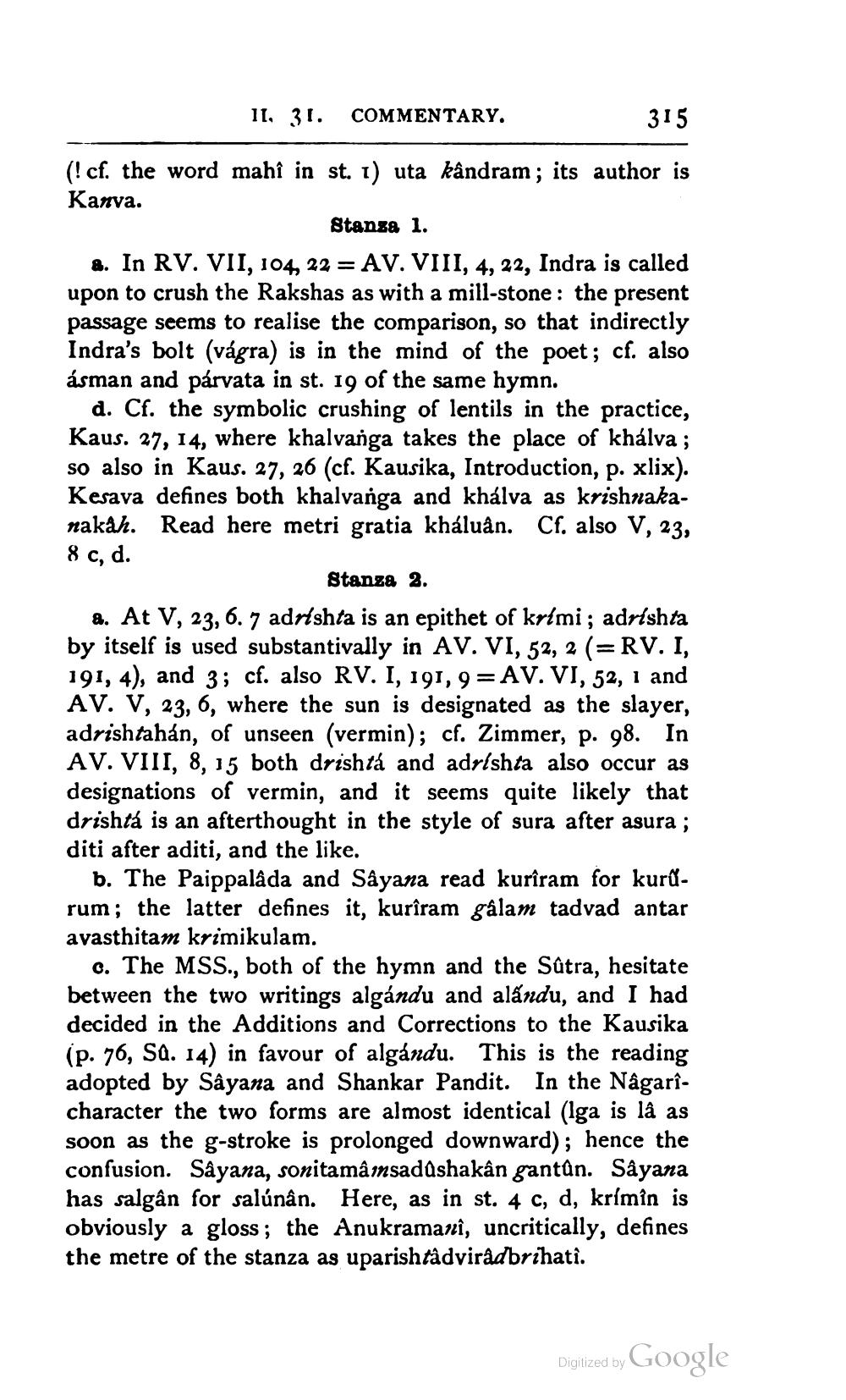________________
11. 31. COMMENTARY.
315
(!cf. the word mahî in st. 1) uta kândram; its author is Kanva.
Stansa 1. 2. In RV. VII, 104, 22 = AV. VIII, 4, 22, Indra is called upon to crush the Rakshas as with a mill-stone: the present passage seems to realise the comparison, so that indirectly Indra's bolt (vágra) is in the mind of the poet; cf. also ásman and párvata in st. 19 of the same hymn.
d. Cf. the symbolic crushing of lentils in the practice, Kaus. 27, 14, where khalvanga takes the place of khálva ; so also in Kaus. 27, 26 (cf. Kausika, Introduction, p. xlix). Kesava defines both khalvanga and khálva as krishnakanakah. Read here metri gratia kháluân. Cf. also V, 23, 8 c, d.
Stanza 2. 2. At V, 23, 6. 7 adrishta is an epithet of krimi; adrishta by itself is used substantivally in AV. VI, 52, 2 (=RV. I, 191, 4), and 3; cf. also RV. I, 191, 9=AV. VI, 52, 1 and AV. V, 23, 6, where the sun is designated as the slayer, adrishtahán, of unseen (vermin); cf. Zimmer, p. 98. In AV. VIII, 8, 15 both drishtá and adrlshta also occur as designations of vermin, and it seems quite likely that drishtá is an afterthought in the style of sura after asura; diti after aditi, and the like.
b. The Paippalåda and Sâyana read kuriram for kurûrum; the latter defines it, kurîram galam tadvad antar avasthitam krimikulam
c. The MSS., both of the hymn and the Sútra, hesitate between the two writings algándu and alandu, and I had decided in the Additions and Corrections to the Kausika (p. 76, Sa. 14) in favour of algandu. This is the reading adopted by Sâyana and Shankar Pandit. In the Nagarîcharacter the two forms are almost identical (Iga is lå as soon as the g-stroke is prolonged downward); hence the confusion. Sayana, sonitamâmsadůshakân gantûn. Sâyana has salgân for salúnân. Here, as in st. 4 c, d, krímîn is obviously a gloss; the Anukramani, uncritically, defines the metre of the stanza as uparish tâdviradbrihati.
Digized by Google




